- Bernard Preston homepage
- Legumes
- Nutritional Value of Green Beans
Nutritional value of green beans
This evaluation of the nutritional value of green beans covers the wide array of phytochemicals, vitamins and low levels of phytates; they are much easier to cook than those that have been dried and are more readily digested.
Protein
For various reasons many people are turning to legumes for more of their protein.
- The cost is about one tenth; peas and beans are much cheaper than meat for the same amount of protein.
- To produce the same amount of protein, legumes require far less water than do animals; greenhouse gases too.
- Getting meat that is not raised in a sty, feedlot or cage is becoming increasingly difficult and costly; free-range barely exists.
- Meat is strongly associated with many chronic degenerative diseases; especially if the diet isn't well balanced which it often is not.
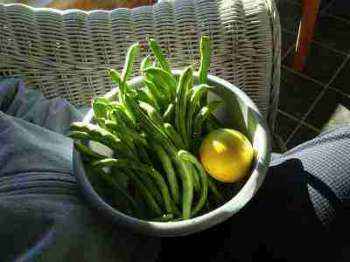
Fibre
Peas and beans have large amounts of dietary fibre. Only 5% of those enjoying typical grocery store food are getting the required daily recommendation of about 35 grams. Constipation and bowel diseases are rife. The friendly microflorae in the gut are deprived of nutrients.
The fibre provides the satiety that those dieting desperately need.
Vitamins
Beans and peas whether green or dried are great sources of many vitamins.
Take chickpeas for example; they are the richest source of pyridoxine, vitamin B6. It is extremely important from conception to the grave. A deficiency is associated with birth defects, poor school achievement and early frailty syndrome. Over 50% of those limited by typical grocery store food are deficient.
So it comes as no surprise that those getting all their food from typical grocery stores are so sickly.
"It has been estimated that 20% of Medicare beneficiaries have five or more chronic conditions; and fifty percent are taking 5 plus drugs."
The nutritional value of green beans includes generous amounts of vitamins A and C; and folate.
Green beans are also a source of the gamma isomer of vitamin E that protects the prostate gland.
Minerals
Minerals are extremely important in the body. Take magnesium, for example; it is required in over 300 different enzymatic reactions in our cells. You simply cannot be healthy if you are deficient.
"The evidence in the literature suggests that subclinical magnesium deficiency is rampant and one of the leading causes of chronic diseases including cardiovascular conditions and early mortality around the globe; and should be considered a public health crisis."
- Open Heart
Researchers are adamant; we should get our minerals from natural food sources like green beans and not from supplements.
Green beans are rich in calcium, iron and magnesium; and many other elements like zinc, for example. Remember that it's a good practice to use the water in which they are cooked in soups and stews.
Phytonutrients
Green beans are a rich source of many phytonutrients like carotenes, phenols and flavonoids. They are antioxidants that help to prevent chronic inflammation in the body.
"Various research studies suggest that these phytonutrients help reduce the risk of a wide variety of chronic illnesses including cardiovascular diseases, high blood pressure and arthritis; diabetes, Alzheimer’s and cancer too."
- Science Direct[4]
Many different green beans
When thinking about green legumes most of us are considering only those like string beans; and peas, of course. However there are many different varieties, each with its own unique benefits.
It's true that many of them may be difficult to acquire and some like broad beans really should be eaten on the day they have been harvested. It is not insignificant that in all five of the Blue Zone countries where ten times as many people live into vigorous, zestful old age that they grow and consume these beauties.
Limas too are enjoyed as green beans; and don't forget the peas.
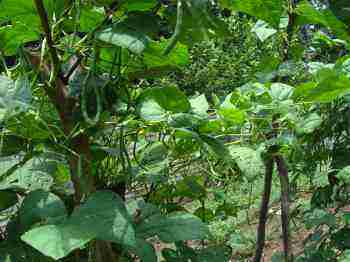
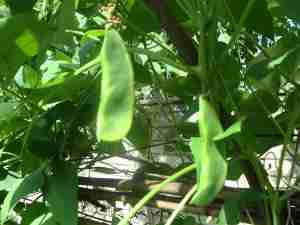
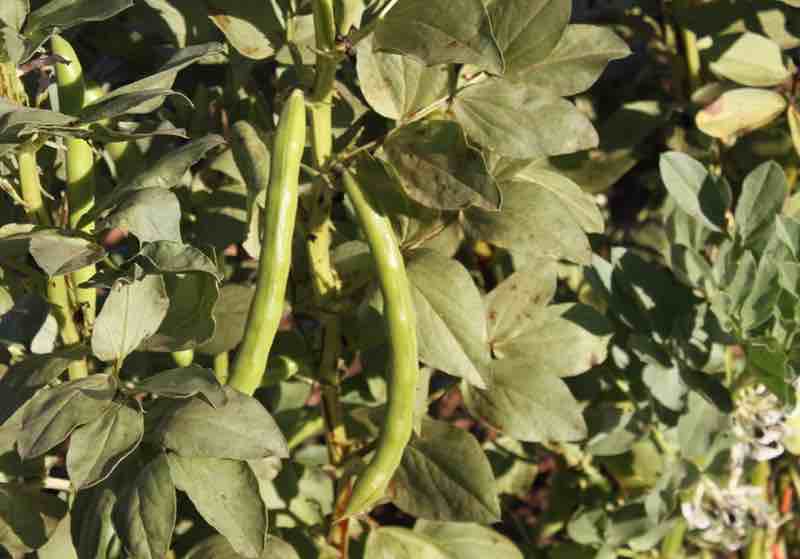
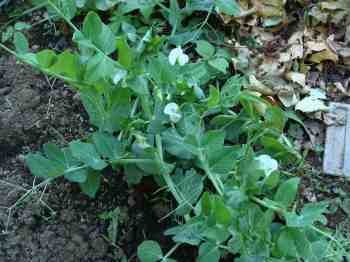
Dried beans
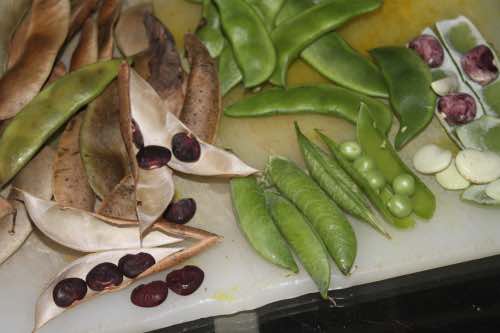 The dried beans "sing" in the wind as you are harvesting them
The dried beans "sing" in the wind as you are harvesting themThere are three good reasons to eat dried beans and peas.
- They are available year round.
- The are easy to transport.
- Storage is relatively simple though weevils can be a problem.
And that's where it ends. Mostly they are less enjoyable, have high levels of anti-nutrients and take a long time to prepare. Freezing green beans may be a better option.
The dried beans rattle in the breeze helping you to find them.
Parkinson's Disease
Others may want to have certain legumes available year round for medicinal reasons. For example the usual treatment of Parkinson's Disease and other tremors is less than optimal. Broad beans, also known as favas contain pharmaceutical quantities of L-Dopa but they have to be consumed daily; for about two thirds of those suffering from these conditions the natural management is far more satisfactory[2].
Freezing would better preserve the nutritional value of green broad beans.
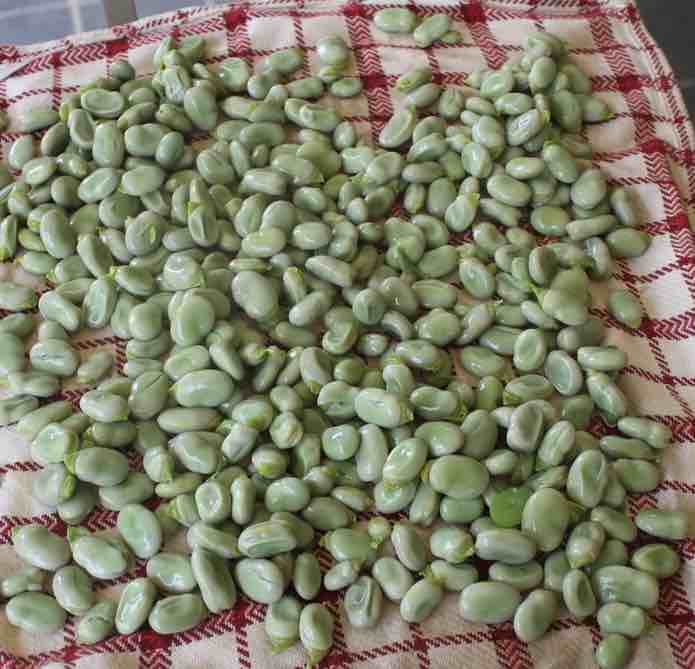 Green beans can be blanched, dried and frozen.
Green beans can be blanched, dried and frozen.Available all year round
In many rural communities there is one large legume crop and it has to feed the family and community for the whole year. But there is a serious drawback; the seeds need to be protected against pests.
Nigeria used to export large quantities of dried black-eyed peas to Europe but it was stopped in 2013 because of high doses of pesticides applied with the sole intention of protecting the seeds against pests[1].
When purchasing dried beans, peas or lentils from the grocery store generally one has no idea what toxic chemicals may have been used; in the production, drying off of the plant or storage.
It is certainly one reason to can beans; that has other drawbacks.
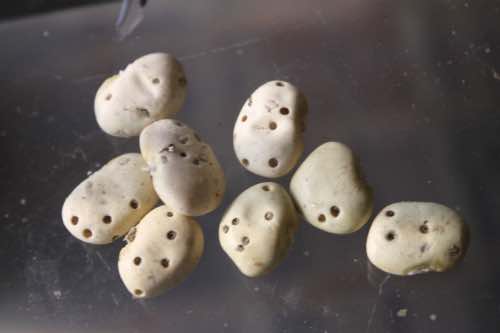
Anti-nutrients
There is general agreement amongst the scientists that despite inhibiting the absorption of certain minerals, anti-nutrients are not a great concern in those enjoying a well rounded diet.
Vegetarians eat large amounts of foods rich in anti-nutrients like lectins and phytates but are not prone to brittle bone disease or anaemia.
The same is not true of vegans but that is too complicated a subject for this brief assessment of the nutritional value of green beans.
Nutritional value of green beans
The nutritional value of green beans is about their protein, vitamins and minerals too; and a rich source of dietary fibre.
But the big plus is they are so much more tasty than dried beans and can be boiled in just five minutes. There's no laborious soaking, rinsing to remove antinutrients and pressure-cooking.
Because of their high water content, by weight it would deceptively suggest that compared to dried beans they contains a fifth as much protein; not so. Give me green legumes any day for their many all-round benefits.
It is true though that many legumes are enjoyed in their jackets when they are still very young; for their extra fibre and larger amounts of certain nutrients. Fava pods for example have even more L-dopa than the beans.
Rather than fussing over whether green or dried beans are better, we should just focus on eating more legumes; both have their positives.
Some vegans for example will argue that "green beans are nice but dried legumes are where it's at." Avoid getting into the argument; just enjoy both. It is hopeless trying to compare apples with oranges.
Dieting
The research is strong; those wanting to shed pounds should include the nutritional value of green beans in their diets. As with all starches we should not move directly from our meals to the couch, car or computer stool; a short ten minute walk will deal with any rise in blood glucose.
When browsing use right click and "Open Link in New Tab" or you may get a bad gateway signal.
Newsletter
Our newsletter is entitled "create a cyan zone" at your home, preserving both yourself and Mother Earth for future generations; and the family too, of course. We promise not to spam you with daily emails promoting various products. You may get an occasional nudge to buy one of my books.
Here are the back issues.
- Lifestyle and ideal body weight
- What are ultra-processed foods?
- Investing in long-term health
- Diseases from plastic exposure
- Intensive lifestyle management for obesity has limited value
- A world largely devoid of Parkinson's Disease
- The impact of friendly bacteria in the tum on the prevention of cancer
- There's a hole in the bucket
- Everyone is talking about weight loss drugs
- Pull the sweet tooth
- If you suffer from heartburn plant a susu
- Refined maize meal and stunting
- Should agriculture and industry get priority for water and electricity?
- Nature is calling
- Mill your own flour
- Bake your own sourdough bread
- Microplastics from our water
- Alternative types of water storage
- Wear your clothes out
- Comfort foods
- Create a bee-friendly environment
- Go to bed slightly hungry
- Keep bees
- Blue zone folk are religious
- Reduce plastic waste
- Family is important
- What can go in compost?
- Grow broad beans for longevity
- Harvest and store sunshine
- Blue zone exercise
- Harvest and store your rainwater
- Create a cyan zone at your home
Did you find this page interesting? How about forwarding it to a friendly book or food junkie? Better still, a social media tick would help.
- Bernard Preston homepage
- Legumes
- Nutritional Value of Green Beans
Address:
56 Groenekloof Rd,
Hilton, KZN
South Africa
Website:
https://www.bernard-preston.com